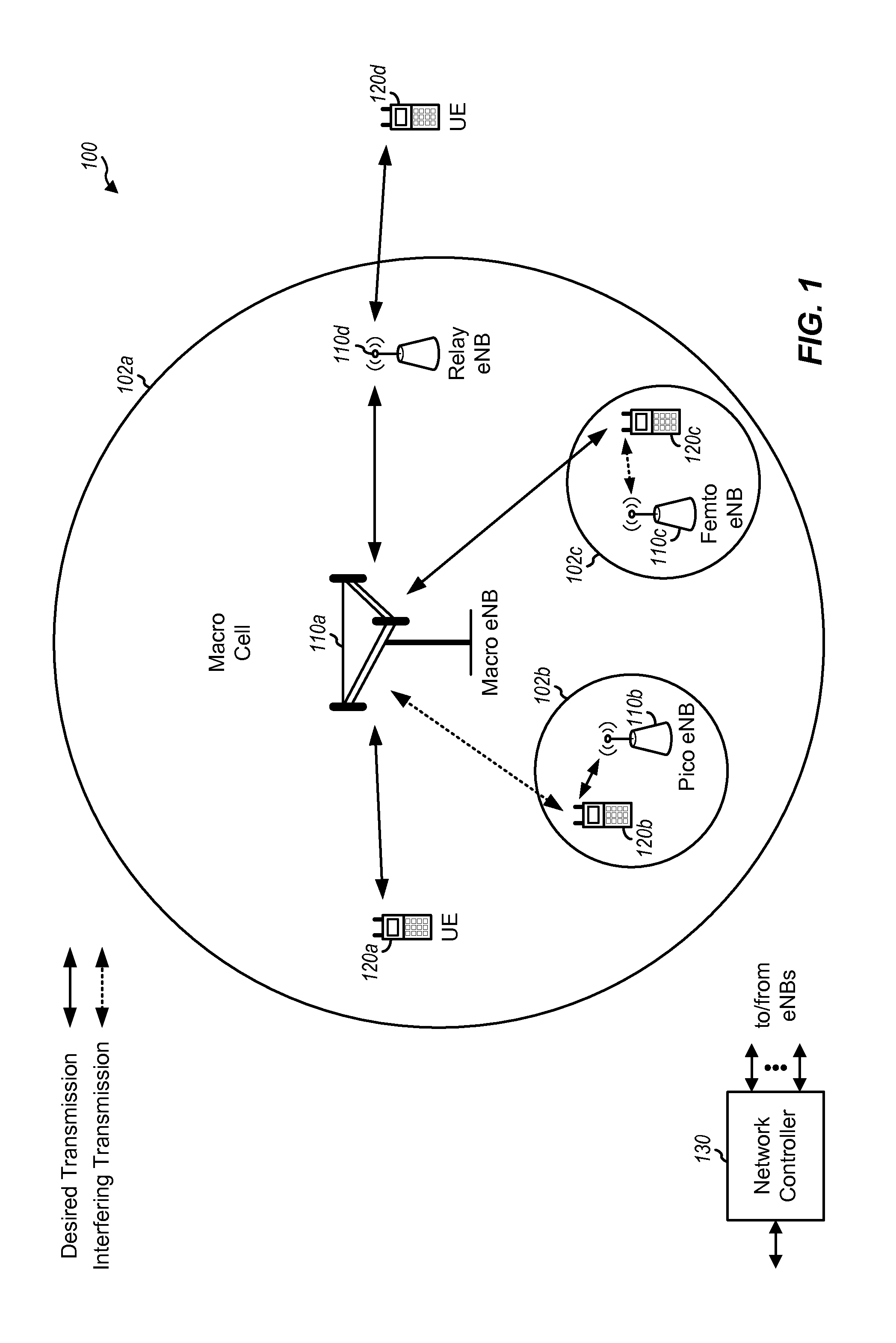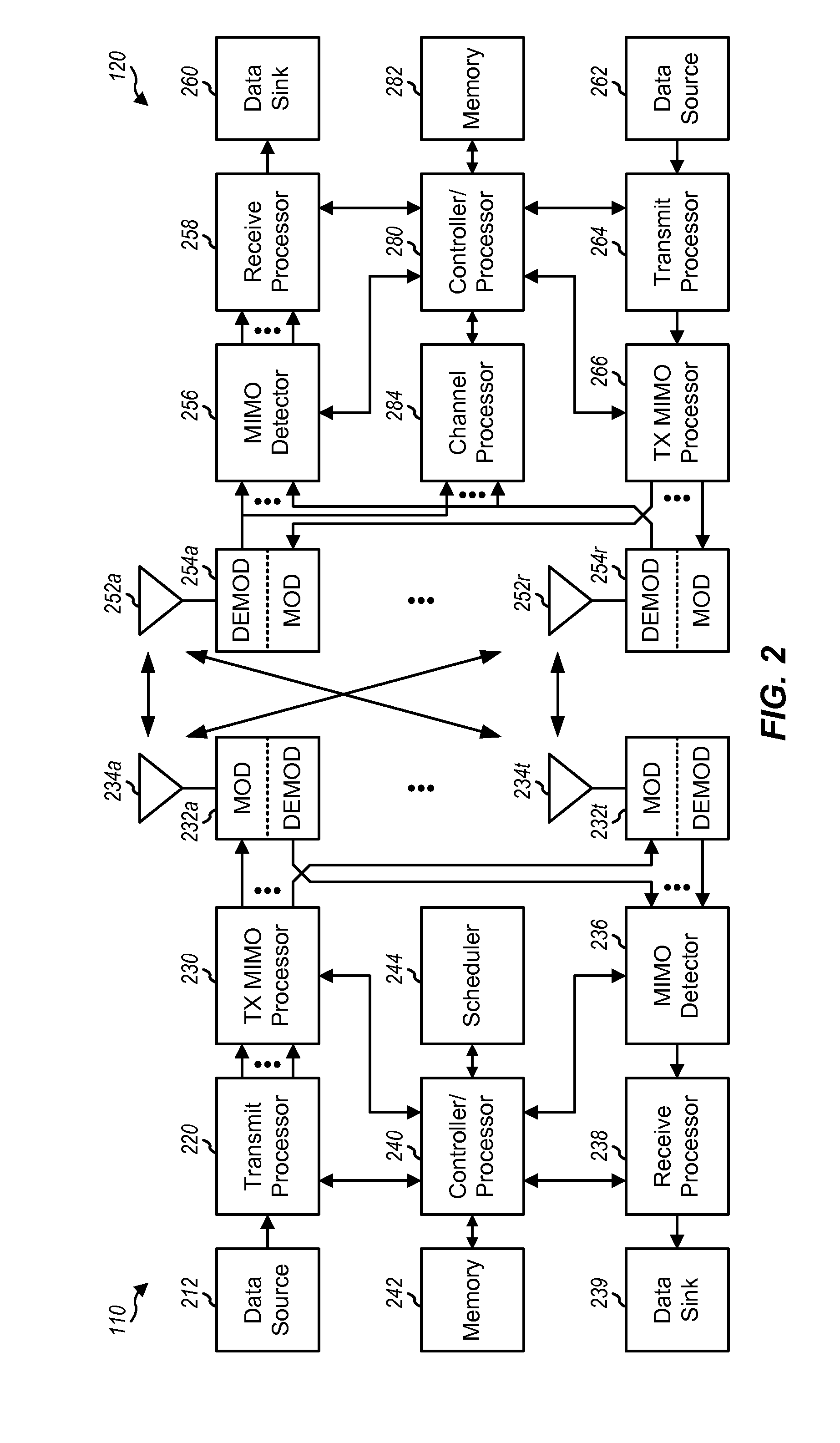Acknowledgment transmissions under cross-subframe resource allocation in lte-a
a technology of acknowledgment transmission and subframe resource allocation, applied in the field of communication, can solve problems such as interference of transmissions from other ues, degrade performance on both downlink and uplink, and transmissions from the base station may observe interferen
- Summary
- Abstract
- Description
- Claims
- Application Information
AI Technical Summary
Benefits of technology
Problems solved by technology
Method used
Image
Examples
Embodiment Construction
In release 8 of the LTE standard (“Rel-8”), downlink data transmissions of one or more user equipments (UEs) in one subframe may be scheduled by control channels of different subframes. The resources for use in acknowledging whether or not a downlink data transmission was successfully received by a UE may be based on a starting control channel element (CCE) of a corresponding control channel. Two or more control channels of different subframes may have the same starting CCE, which may lead to acknowledgment resource collisions between the one or more UEs. Therefore, certain aspects of the present disclosure provide techniques to avoid acknowledgment resource collisions between the one or more UEs.
The techniques described herein may be used for various wireless communication networks such as CDMA, TDMA, FDMA, OFDMA, SC-FDMA and other networks. The terms “network” and “system” are often used interchangeably. A CDMA network may implement a radio technology such as Universal Terrestrial...
PUM
 Login to View More
Login to View More Abstract
Description
Claims
Application Information
 Login to View More
Login to View More - R&D
- Intellectual Property
- Life Sciences
- Materials
- Tech Scout
- Unparalleled Data Quality
- Higher Quality Content
- 60% Fewer Hallucinations
Browse by: Latest US Patents, China's latest patents, Technical Efficacy Thesaurus, Application Domain, Technology Topic, Popular Technical Reports.
© 2025 PatSnap. All rights reserved.Legal|Privacy policy|Modern Slavery Act Transparency Statement|Sitemap|About US| Contact US: help@patsnap.com



